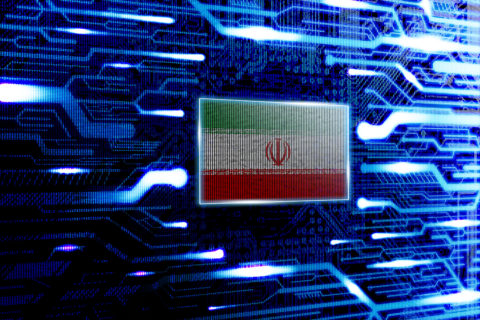Disruption is everywhere – today it is standard in every market. While not a new concept, it has certainly become an ever-bigger challenge. Even previously staid markets, such as for mattresses or towels, have shown they are not immune.
Technology is fuelling the rate of disruption and providing new ways of engaging consumers. Businesses can disrupt markets by reaching consumers through novel methods and reinventing category engagement around service and convenience. Alternative business models enable a greater number of consumers to access the category and solve problems for consumers through new routes to market.
Whereas the development and launch of new products used to take months, today it can be executed in a matter of weeks. Increasingly, products and services are tested live in markets, and then refined over time. This agility meets the needs of more demanding, educated and empowered consumers.
In addition to bringing bigger ideas to the market, we’ve noted that disruptors share four key characteristics.
- First, disruptors view the market through a different lens. They are able to see beyond how things have always been done. Disruptors broaden and reframe the problem they solve for consumers. This approach sees a business offering mobility rather than selling a car, offering a travel experience rather than selling a hotel room. In doing so, disruptors open their growth opportunities to bigger ideas.
- Disruptors are 100% consumer-centric. Consumers are more educated and empowered than ever, and expectations set in one industry or category transfer to all others. By putting the consumer at the heart of the proposition, a disruptor seeks to facilitate consumers’ lives. A disruptor spots gaps in the market and delivers products or services that meet unmet needs that consumers themselves may be unaware they have.
- Disruptors leverage technology to consistently engage with consumers and deliver authentic experiences through shared values, superior service, convenience and fun. They engage genuinely by doing so on the consumer’s terms – via methods and mediums they want to be engaged in.
- By its very nature a disruptor is ahead of the pack. Disruptors act boldly and quickly, creating markets where there was none before. They do not seek small improvements on what is already there, but revolutionise a category or create a new one. This plays to the strengths of small, nimble brands that are not tied down by layers of bureaucracy.
And what about the incumbents?
In a fast-moving environment, some large multi-nationals (incumbents) have been caught off-guard – enabling even renovation and innovation to be “disruptive” to their business. In reaction, multi-nationals are working hard to improve their innovation processes to remain relevant for today’s consumers. This is borne from leveraging the unique competitive advantages that incumbents bring to the table over local brands and insurgents, such as scale, capital, and top talent to deliver disruptive solutions for consumers. At the same time, overcoming weaknesses must be at the forefront of a disruption strategy.
So, how are they doing this? The first step involves building a successful disruption culture for a large, established organization.
Strategy and innovation departments are joining forces more proactively to ensure that overall business growth objectives are clear and adjoined in all that they do. In today’s competitive environment, every project and activity must be guided with distinct purpose and connect to the highest levels of the business strategy.
In addition, many multi-nationals are realising the necessity of investment in disruption. Without true commitment and focus, disruption simply does not occur in large organisations where the majority of workers are engrossed in the day to day and disruptive thinkers have traditionally been discouraged for ‘working against the grain.’ Disruption is evolving as an ever-important new business function, and these divisions are both staffed and operate differently, oftentimes filled with entrepreneurs and individuals with start-up experience, and some going as far as to physically locate these divisions away from the main hub.
Lastly, while global headquarters have historically driven the company product and service agenda and modified to accommodate local tastes, multi-nationals are granting more power to local hubs to both build and create the innovation needed for local consumers as well as building feedback loops that allow disruptive ideas, now no longer borne just from developed markets, to circle back to global HQ.
How it’s done makes a big difference
The second step is completely changing how multi-nationals execute new ideas.
Partnership has become more critical than ever, challenging the paradigm that innovation must be wholly housed in-house to remain competitive. Large incumbents are leveraging their capital to invest in incubator and accelerator programmes where they can focus on learning more efficiently alongside potential insurgents rather than working against them. Established brand names and wide scale networks create a mutually beneficial proposition. Joint ventures similarly expand capabilities and speed timelines.
Within the broader context of open innovation, incumbents must proactively look for ideas outside their organisation to stimulate new thinking and reduce the risk of complacency. Leveraging external experts, consumer crowdsourcing, and online trend tracking have become new standard inputs to both finding and executing disruptive ideas.
They are shifting expectations on new innovation and working to develop faster go-to-market strategies that allow for rapid refinement in real time. True disruptors are not focused on short-term gains. More importantly, they don’t worry about immediate profitability; they are willing to focus on the long-term opportunity.
Maintaining growth requires consistent focus and effort – the market is fast-evolving and innovation is a process, not a one-off event. This is true for both incumbents and insurgents.
Disrupting oneself is the ultimate goal and all companies should strive to reinvent, as they evolve with consumers and the world.
To learn more about how to successfully disrupt, download our free white paper “How to Be a Disruptive Brand: Reinventing Consumer Markets.”
In addition to our megatrend framework and content, Euromonitor International partners directly with clients to help to quantify the current and forecasted impact of megatrends, prioritize which megatrends and industry/category level trends will create the greatest opportunities for disruption, and ideate the next steps towards growth.


